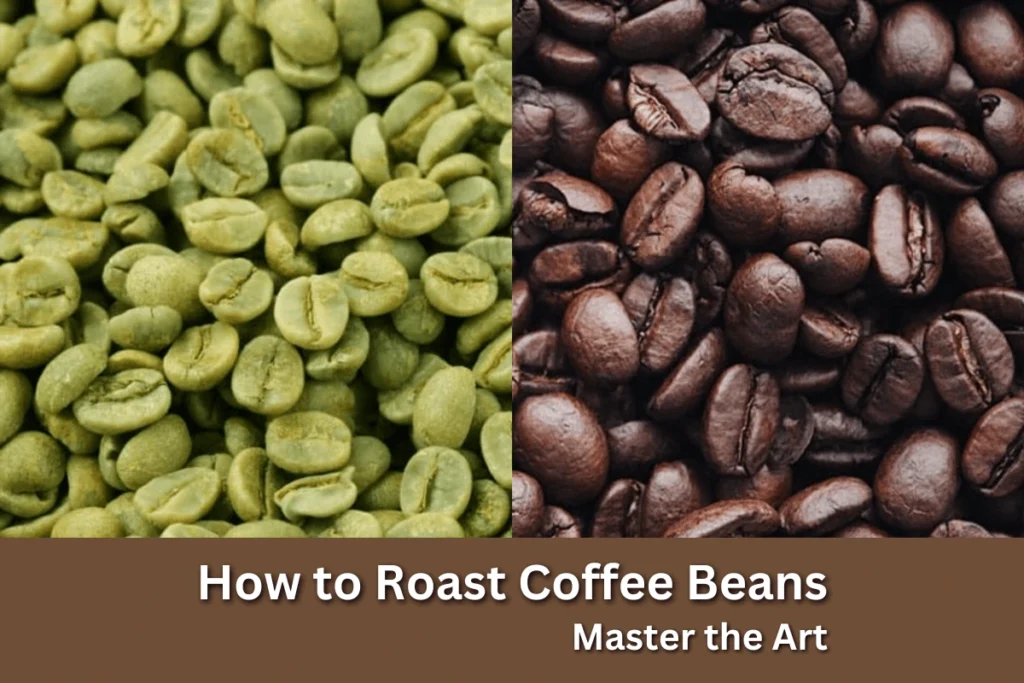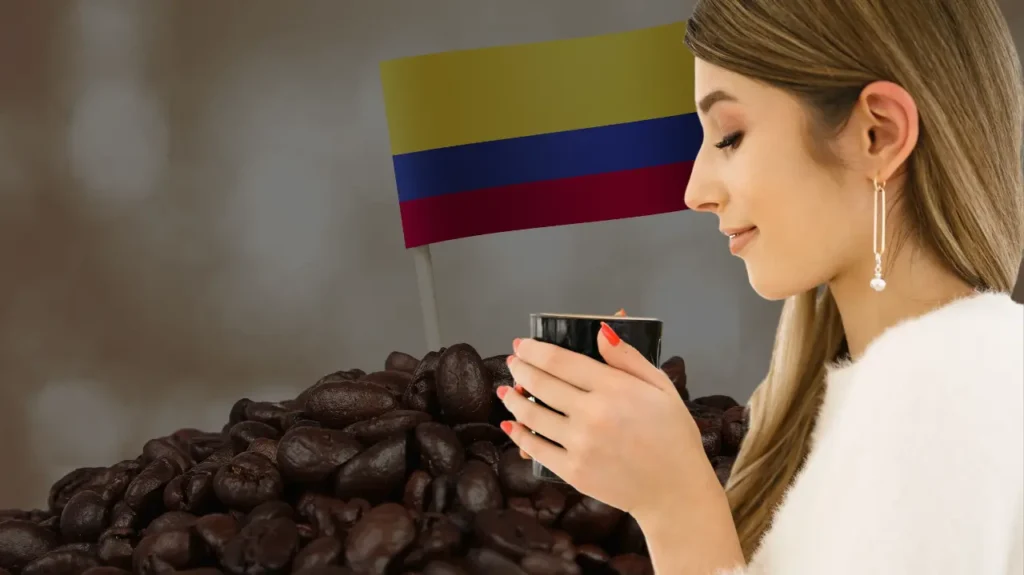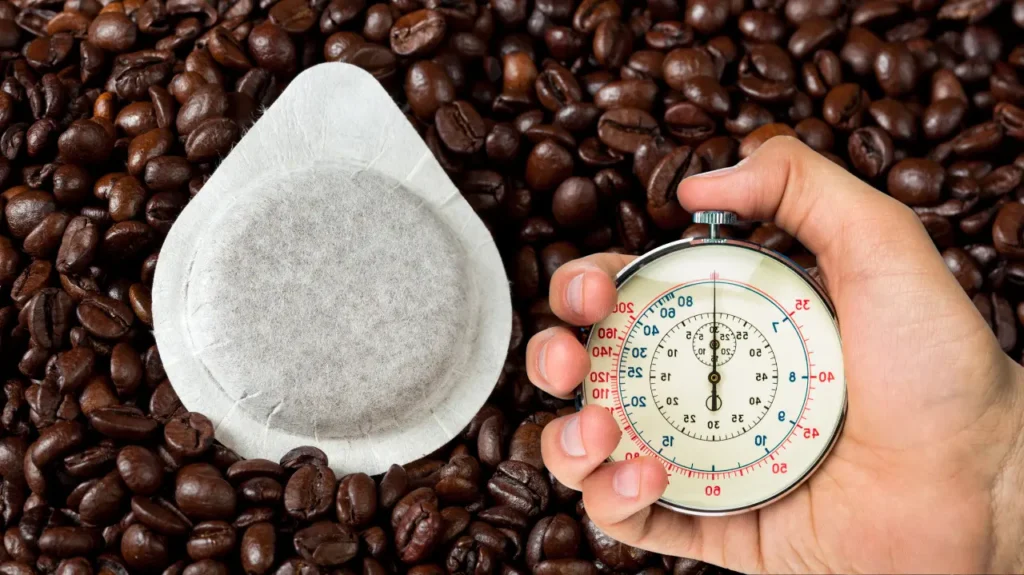You’ve just found an old bag of Coffee in your pantry. The “best by” date? Long gone. Now you’re stuck wondering, can you drink expired Coffee?
Will it taste like cardboard? Could it make you sick? Relax. I’ve got answers.
As a coffee expert, I’ve tasted stale brews, tested forgotten beans, and even chatted with baristas about their “expired coffee” secrets.
Here’s the deal: Drinking Coffee past its date isn’t a health hazard if you know the rules. But flavor? That’s where things get tricky.
This guide strips away the myths and gives you straight facts. No confusing terms, no scare tactics. This is just honest advice for anyone who loves Coffee but hates wasting it.
Let’s start with the basics. Coffee doesn’t “expire” like milk. Those dates are about freshness, not safety.
Think of it like bread: stale isn’t dangerous, but nobody wants a soggy sandwich. Your old Coffee might not taste amazing, but with a few tricks, you can still make it work.
Or repurpose it. Or compost it. We’ll cover it all.
Can You Drink Expired Coffee? Decoding What “Expired” Really Means
Do you know the “best by” date on your coffee bag? It’s not a hard deadline; it’s a flavor countdown. Coffee doesn’t “spoil” like milk.
Instead, it slowly loses its spark. Think of it like a balloon losing air: it’s still a balloon, just less fun.
Here’s the science: When Coffee is roasted, oils and gases (like carbon dioxide) build up inside the beans. These oils carry flavor.
Over time, oxygen sneaks in, breaking down those oils. Whole beans? They’re like sealed treasure chests; they keep their riches for longer.
Ground coffee? It’s like opening the chest and letting the gold dust blow away.
Ever wonder why some bags have a tiny valve? That’s not for decoration. It lets gases escape without allowing air in, buying you more time.
But once opened, the clock ticks faster. A barista once told me, “Coffee is a fresh crop. Treat it like herbs, not canned soup.”
What about decaf or flavored Coffee? Decaf fades faster; the decaffeination process weakens the bean’s structure.
Flavored coffees? Those vanilla or hazelnut additives can turn rancid quicker than plain beans.
And here’s a twist: Dark roasts oxidize faster than light roasts. Their oily surface is like a magnet for air. Light roasts? They’re drier, so they cling to flavor longer.
Safety of Drinking Expired Coffee
Drinking expired Coffee won’t land you in the ER. Coffee’s natural acidity and dry environment make it a terrible home for bacteria.
Think of it like uncooked rice; stored right, it’ll outlast your pantry. But (yes, there’s a “but”)…
Moisture is the enemy. If your coffee bag sat in a steamy kitchen or damp basement, toss it. Mold loves wet Coffee, and some molds produce mycotoxins, nasty compounds linked to health issues.
A 2021 study in Food Control found mycotoxins in poorly stored Coffee, though rare. Your nose is your best tool here. Mold smells musty, like wet socks.
What about brewed Coffee left out overnight? The liquid itself can grow bacteria after 24 hours, especially with milk or sugar added.
But dry grounds or beans? They’re like a desert; nothing survives there.
Here’s something you rarely hear: Packaging matters. Cheap bags without airtight seals let in humidity.
One Reddit user drank 10-year-old instant Coffee stored in its original, unopened glass jar with no issues. Another found mold in a bag left open in a rainy garage.
Flavored coffees are riskier. Are those vanilla or pumpkin spice additives? They can turn rancid faster than plain beans, upsetting sensitive stomachs.
How to Tell If Coffee Has Gone Bad
Stale Coffee won’t scream, “I’m rotten!” it whispers. Training your senses to catch those whispers is key. Here’s how the pros do it:
Sniff test first. Fresh Coffee smells vibrant; think blooming flowers or toasted nuts. Expired Coffee? It’s like opening a book left in a damp attic: flat, dusty, lifeless.
If you get a whiff of wet cardboard or old spices, it’s past its prime. Pro tip: Grind a few beans and smell immediately. Stale Coffee loses aroma within seconds.
Look for the clues. Whole beans should be dry and matte, not shiny or oily (unless it’s a dark roast). Is ground Coffee turning grayish? Oxidations at work.
Is instant Coffee clumping like wet sand? Humidity invaded. And if you spot fuzzy patches, even tiny ones, it’s game over.
Mold spreads invisibly, so one speck means dump it all.
Taste with caution. Brew a tiny cup. Fresh coffee dances on your tongue, bright, balanced, maybe fruity or chocolaty.
Expired Coffee? It’ll taste like a bad imitation: sourness without sweetness, bitterness without depth. Some describe it as “dirt water” or “wood chips.” If your face scrunches up, listen to that reflex.
Here’s a lesser-known trick: Rub grounds between your fingers. Fresh Coffee feels slightly gritty but clean.
Stale or moldy Coffee? It might leave a greasy film or smell musty when warmed by your skin.
And remember: Your senses work together. A 2023 study in Beverages found that 78% of people correctly identified stale Coffee by smell alone, but combining sight and taste boosted accuracy to 94%. Trust your gut.
Storage Tips to Maintain Freshness
Coffee is like a shy performer; it needs the right backstage environment to shine. Forget fancy gadgets; freshness boils down to three enemies: air, heat, and moisture.
Here’s how to outsmart them.
Choose your container like a hawk. Airtight isn’t enough; go for opaque, ceramic, or stainless steel jars. Clear glass? UV light sneaks in, fading flavors.
Bonus: Keep your container small. Half-empty jars trap more air, speeding up staling. A roaster once told me, “Coffee needs a snug home, not a mansion.”
Freezing myths busted. Yes, freezing pauses oxidation, but only once. Thaw the whole batch, and use it fast.
Re-freezing creates condensation, turning beans into flavorless sponges. For long-term storage, vacuum-seal portions. Instant Coffee?
Toss it in the freezer guilt-free; it’s already dead, flavor-wise.
Location, location, location. That cupboard above your stove? Too hot. Fridge door? Humidity is central.
Ideal spot: a dark, cool pantry shelf (under 70°F/21°C). Live in a humid climate? Silica gel packets in your coffee jar absorb rogue moisture.
Buy smart. Whole beans bought weekly beat “bulk discount” bags. Pre-ground? Use it within 2 weeks or repurpose it as a deodorizer.
Capsules? Keep them sealed in foil until D-day; once exposed, they become stale in days.
And here’s a secret: Coffee gases matter. Fresh beans release CO2, which acts as a natural preservative.
Valve bags let gas escape without allowing air in. Transfer beans to a jar only after they stop degassing (about 1 week post-roast).
Brewing with Older Coffee
So your Coffee’s past its prime. Before you surrender to blandness, fight back. Stale beans aren’t dead; they’re just napping. Here’s how to wake them up.
Grind smarter, not harder. A finer grind forces water to work harder, extracting every last flavor molecule. But here’s the kicker: Steep longer.
Combine a fine grind with a 5-minute French press soak. The result? A bolder cup that masks staleness.
Double down on dosage. If your Coffee tastes like weak tea, add 25% more grounds. Yes, it’s overkill for fresh beans, but desperate times call for desperate measures.
A café owner in Portland swears by this for old stock: “It’s not elegant, but it keeps customers caffeinated.”
Go ice-cold. Cold brew is stale Coffee’s best friend. The 12–24 hour steep mellows harsh notes. Add a pinch of salt to neutralize bitterness, or mix in cinnamon sticks during brewing.
One Reddit user turned 6-month-old beans into a smooth, chocolatey cold brew, “Better than my fresh pour-over!”
Embrace the dark side. Milk and sugar aren’t cheating. A latte or mocha covers a multitude of sins. Even better: Melt a square of dark chocolate into your mug.
The fat binds to stale compounds, tricking your palate.
The blending trick. Mix 70% stale beans with 30% fresh. The fresh beans’ bright acids distract from the older batch’s flatness.
It’s like adding lemon to dull guacamole; suddenly, it works.
Pro tip: Avoid paper filters. Metal mesh (French press, Aeropress) lets oily, bitter compounds through, which is precisely what you need to fake depth in stale Coffee.
Alternative Uses for Expired Coffee
Expired Coffee isn’t garbage; it’s a multitasking powerhouse. Even if it tastes like regret, it can still work wonders around your home. Here’s how:
Supercharge your compost. Coffee grounds are nitrogen gold for soil. Mix them with dried leaves or cardboard to balance acidity.
Earthworms adore Coffee; it’s like a caffeine-free energy drink for them. Pro tip: Sprinkle grounds around acid-loving plants like blueberries or roses.
They’ll thank you with bigger blooms.
Banish fridge smells. Place dried used grounds in a bowl inside your fridge. They absorb odors better than baking soda.
A chef friend swears by this: “Forget lemon peels, coffee kills fish smell fast.”
Scrub-stuck pans. Mix grounds with dish soap to make a gritty paste. It lifts burnt food without scratching stainless steel.
Bonus: The oils in Coffee leave a subtle protective shine.
DIY spa treatment. Combine grounds with coconut oil and brown sugar for a cellulite scrub. The caffeine temporarily tightens skin, and the grit exfoliates.
One Redditor raved: “My legs looked smoother than my latte art.”
Deter garden pests. Sprinkle grounds around plants to repel slugs and ants. Cats hate the smell, too, and use it to keep strays from digging in flower beds.
Avoid using it on seedlings, though; too much can stunt growth.
Natural dye hack. Steep old grounds in hot water to create a rich brown dye for fabric, paper, or Easter eggs.
It’s eco-friendly and gives a vintage vibe.
Firestarter magic. Dry used grounds thoroughly, mix with melted candle wax and mold into cubes. They ignite slowly, perfect for campfires or fireplaces.
A survivalist on r/preppers called it “the ultimate coffee upcycle.”
The Science Behind Coffee Freshness
Coffee’s magic isn’t just in the roast; it’s in the molecules. Fresh beans are packed with over 1,000 volatile compounds, like delicate citrusy aldehydes and toasty pyrazines.
These compounds evaporate faster than perfume, which is why your Coffee’s aroma fades first.
Here’s the breakdown:
- The Oxygen Attack: When oxygen meets coffee oils, it triggers lipid oxidation, a chain reaction that turns once-vibrant flavors into dull, cardboard-like notes. Ground coffee’s huge surface area (think: crumbs vs. a whole cookie) speeds this up 10x faster than whole beans.
- CO2 Escape Act: Freshly roasted beans release carbon dioxide, which acts as a natural preservative. Once the gas depletes (around 2–3 weeks post-roast), oxygen swoops in to ruin the party.
- Light & Heat Sabotage: UV light breaks down chlorogenic acids (key for brightness), while heat accelerates staling reactions. A 2020 Journal of Agricultural and Food Chemistry study found Coffee stored at 77°F (25°C) loses 60% of its key flavors in 3 weeks vs. 3 months at 41°F (5°C).
Ever noticed dark roasts go stale faster? Their oily surface is oxidation’s playground. Light roasts? Their dry exterior buys time.
And here’s a hidden villain: moisture. Even small humidity spikes (like in a steamy kitchen) dissolve cell walls in beans, releasing bitter compounds locked inside.
Freezing can backfire here; thawing creates condensation that acts like a flavor bleach.
Health Considerations
Expired Coffee won’t poison you. But it might throw subtle curveballs at your body. Here’s what most guides miss.
Stale Coffee loses antioxidants like chlorogenic acid, the compound linked to heart health benefits.
A 2019 Antioxidants journal study found Coffee loses 80% of these compounds within 6 months of roasting.
You’re still getting caffeine but missing out on the good stuff.
Acidity shifts matter. As coffee ages, its pH drops slightly, making it harsher on sensitive stomachs. Ever felt heartburn after old Coffee?
It’s not in your head. The breakdown of oils creates fatty acids that irritate the guts. Pro tip: Add a pinch of baking soda to neutralize acidity.
Here’s a shocker: Caffeine degrades too. Stored improperly, Coffee loses 10–20% of its caffeine in a year. That “weak” cup might not be your imagination.
Conversely, moldy Coffee can harbor ochratoxin A, a toxin linked to kidney issues in high doses. Rare, but it’s a risk if you ignore musty smells.
What about pregnant folks or anxiety sufferers? Stale Coffee’s unpredictable caffeine levels (some weaker, some concentrated in clumps) make dosing tricky.
One Quora user reported jitters from old Coffee that they thought was “safe” due to its age.
And don’t forget: Oils in old coffee turn rancid. While not toxic, they can trigger nausea or headaches in sensitive people.
Dark roasts are worse here, and their oily surface oxidizes faster.
Myths and Facts About Expired Coffee
Let’s debunk the tall tales and arm you with truth. Here’s the real deal on expired Coffee:
| Myth | Fact |
| Expired coffee is poisonous. | Coffee doesn’t turn toxic post-expiration. If dry and mold-free, it’s safe, just bland (Dripshipper). |
| You can’t drink coffee after the “best by” date. | The date marks peak flavor, not a death sentence. Drink it, but expect weaker notes (Quora). |
| Freezing coffee keeps it fresh forever. | Freezing buys time but risks moisture and odor absorption. Use within 2 months for best results (Coffee the Canvas). |
| Ground coffee lasts as long as whole beans. | Grounds stale 4x faster due to surface area. Grind fresh or lose flavor (WebstaurantStore). |
| Reheating coffee restores its freshness. | Heat amplifies staleness. It’ll taste sharper, not better (Journal of Food Science). |
| All mold on the Coffee is visible. | Mycotoxins can lurk invisibly. Musty smell = toss it, even if it looks clean (FDA reports). |
| Instant coffee never expires. | It lasts decades but loses flavor after 20+ years. Is 2012 stock still safe? Yes. Tasty? No (NASA studies). |
| Storing coffee in the fridge preserves it. | Fridge humidity is worse than pantry heat. Airtight + dark = king (SCA guidelines). |
Why these myths stick: Fear of waste makes us cling to hacks like freezing or reheating. But Coffee’s chemistry doesn’t bend to hope.
The takeaway: Expired Coffee isn’t a villain; it’s a lesson in freshness science. Use this table as your cheat sheet.
Next time someone says, “Freezing revives beans!” you’ll smile, brew smarter, and sip wiser.
Conclusion
So, can you drink expired Coffee? The answer’s clear, yes, but with a catch. It won’t harm you, but it might haunt your taste buds.
Here’s the kicker: Coffee isn’t about dates. It’s about trust in your nose, your palate, and your guts (literally).
Stored right, that old bag could surprise you. I’ve sipped year-old beans that outshone “fresh” grocery store coffee.
But I’ve also tossed pricy roasts that smelled like a wet basement. The difference? How they were treated. Air, heat, moisture, master these, and you master shelf life.
If flavor falters, get creative. Compost it. Scrub with it. Gift it to a gardener. Coffee’s second act is often better than its first.
Remember: “Expired” is just a word. Your senses are the real expiration date. Sniff, sip, decide. No guilt, no waste, just smart, sustainable choices.




